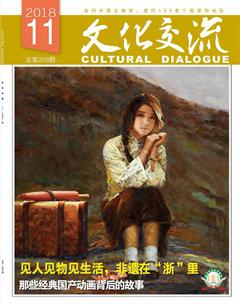浙江非遗一年间
胡雁
“东南形胜,三吴都会,钱塘自古繁华。”浙江作为华夏文明发祥地之一,人文历史久远,文化底蕴深厚。近年来的“十大考古新发现”,展示出浙江大地丰富的古代文化遗存,让人们不时惊喜于历史长卷中的颗颗明珠流光溢彩,熠熠生辉。而与物质文化遗产相伴相随,并能在千百年间薪火相传、生生不息的非物质文化遗产,同样是博大精深、蔚为壮观。
浙江,被称为南戏的故乡,乡间丰富多彩的传统戏剧在悲欢离合、跌宕起伏中,演绎着中华民族独一无二的文化传统和价值观;浙江,有许多“百工之乡”,坊间精雕细琢的工艺美术品透过器物的美妙,让人感受着传统工艺之美,体验着这方水土的人杰地灵……优秀传统文化是我们民族的精神家园,是文化自信的重要源泉,也是民族复兴的丰厚滋养,保护和弘扬珍贵的非物质文化遗产,是全体文化工作者的神圣使命。
浙江作为全国非物质文化遗产保护综合试点省,先行先试,不断探索,大力推进非遗事业发展。新世纪以来,非遗普查浙江模式、非遗名录浙江现象、非遗保护浙江经验、非遗利用浙江实践,不断成为全国瞩目的热点,美丽非遗在文化浙江建设中绽放出夺目的光彩。
今年5月,文化和旅游部公布第五批国家级非遗代表性传承人名单共1082人,浙江74人入选,位列各省区市第一,实现了国家级非遗项目和代表性传承人总数“全国双第一”,标志着我省在非物质文化遗产传承人队伍建设上的成效;6月,文化和旅游部隆重表彰了全国非物质文化遗产保护工作先进集体和先进个人,浙江有两个集体、5名个人受到表彰,是全国受表彰对象总数最多的省份。
新时代,文化浙江建设开启新征程,非物质文化遗产作为文化浙江的底蕴和底色,也是“大花园”建设的活力和魅力所在。
十年非遗展,走出自己的路
9月,第十届浙江·中国非物质文化遗产博览会(杭州工艺周)在杭州白马湖国际会展中心举行。
这是浙江·中国非遗博览会召开的第十个年头。十年间,在传承人与非遗工作者的不断努力下,浙江非遗在“见人见物见生活”的生动实践中展现出勃勃的生机。
展会以“传统工艺融入现代生活,传承发展促进乡村振兴”为主题,以“一个主城市,一个主展馆,两个分会场”为构架,以“走进城市社区,促进国际交流,服务乡村振兴,参与非遗扶贫,推进融入生活,营造社会氛围”为总体目标,来自中东欧16个国家,全国28个省(区、市)以及香港、澳门地区,共220个项目、350个传承人,参加展示展演展销与研讨交流等系列活动,有28.7万人次参加主展馆活动。
跟以往相比,本届博览会实现了三大提升:一是建立了新体系,在以往博览会的基础上新增“杭州工艺周”品牌,形成“浙江·中国非物质文化遗产博览会(杭州工艺周)”新品牌,建立了“主城市、主展馆、分会场”的活动新体系,为展会品牌的长远、全面发展奠定新的扎实基础。二是打开了新角度,“杭州工艺周”立足杭州主城区,以“独特韵味,别样精彩”为主题的“传统工艺走进社区”系列活动,形成了文化消费、文化生活、文旅融合的“一地多点”新格局。三是形成了新模式,有展览、展示、展映、展演、展销,也有互动、体验、比赛、竞技、研讨,耳目一新的活动模式受到了群众的普遍欢迎。
重保护重传承,浙江自有妙招
多年来,先行先试的“浙江实践”为全国非物质文化遗产保护工作作出了应有的贡献,随着政府公布的非物质文化遗产名录不断增加,重视和加强基础性的保护工作成为了当务之急。进入新时代,“重保护”将成为浙江非遗工作的鲜明符号。
浙江组织开展了多项试点工作:一是对列入联合国教科文组织人类非物质文化遗产代表性名录和急需保护名录的10个项目开展“3+N”保护行动,在官网上公布保护地文化部门的年度计划,进一步向社会宣示对文化遗产的保护职责,落实对联合国教科文组织的履约责任。二是组织对“龙泉青瓷烧制技艺”等人类非物质文化遗产代表作项目开展评估试点工作,探索有效的保護路径。三是制定实施《浙江省省级非物质文化遗产代表性项目管理办法(试行)》,进一步加强对非物质文化遗产项目的科学化、规范化管理,夯实项目保护的基础性工作。四是发布2017年度全省非物质文化遗产保护发展指数,组织对基层非遗保护工作开展评估,促进市县比学赶超。
另外,传统表演艺术保护也取得新进展。
继省文化厅2015年实施《浙江省传统戏剧保护振兴计划》取得明显的阶段性成果后,2017年,省文化厅又启动了全省曲艺保护专项行动,对传统表演艺术加大保护力度。今年5月,在绍兴市联合主办中国浙江(绍兴)·全国曲艺小书传承发展论坛及观摩交流展演,组织国内具有代表性的老中青三代弹词走书艺术家7个专场的交流演出,来自全国11个省区市的30多位专家学者、150多位传承人携7台共44个优秀节目参加本次活动,受到了文化和旅游部的高度关注,非遗司领导专程到绍兴考察。6月,文化和旅游部在天津举办的主场活动“全国非遗曲艺周”上,浙江省23个国家级曲艺类非遗项目悉数登台、载誉而归,被称为项目最多、保护最好、表演最整齐的省份,荣获了“优秀组织奖”。
遗产日活动丰富,展现浙江非遗
“文化遗产”这些年来逐渐成为一个热词。每一项称得上文化遗产的,都经历了岁月沧桑,饱含着历史风雨,凝结着情感和知识因子。文化遗产只有走到百姓身边,才能重新“活”起来;百姓只有感知文化遗产的信息,才能体会岁月积淀的魅力。这也是“文化和自然遗产日”存在的意义。
今年的遗产日,浙江主场城市活动突出大运河文化带建设主题,展示了“新时代、新生活、新传承”,更加贴近基层,贴近人民群众,突出乡土艺术特色,以“多彩”的非遗特色和“多姿”的活动特色提升人民群众保护文化遗产的自觉,满足人民群众对美好生活的向往,以文化助力乡村振兴。
今年浙江主場活动,还有900位小朋友参与的“少年非遗说”民间故事讲述大赛、以“百工百匠”为主题的浙江非遗传统工艺传承人匠心故事宣传活动、11个市同时开展的“浙江好腔调”传统戏剧展演、“非遗薪传”浙江非遗传统体育展评等一系列活动,加上各市县文化部门组织开展的丰富多彩的非遗宣传展示系列活动,共同构成了“多彩非遗、美好生活”的生动局面。
Zhejiang Leads in Heritage Safeguarding
By Hu Yan
Zhejiang, a province in eastern China, is a powerhouse of intangible cultural heritage due to its long history and culture traced back to more than 7,000 years ago. As a pilot province for safeguarding intangible cultural heritage in an all-around way, Zhejiang has done quite a lot in this matter. The way Zhejiang successfully conducted comprehensive surveys of intangible cultural heritage is now called “Zhejiang Model”. Over years, Zhejiang has put the largest number of heritage items on national lists and has the largest number of inheritors recognized by the central government. This is known as “Zhejiang Phenomenon”. What the province has done in utilizing intangible cultural heritage is summarized as “Zhejiang Practice”.
In May 2018, the Ministry of Culture and Tourism issued the fifth national list of inheritors of intangible culture heritage. Of the 1082 masters named in the list, 74 were from Zhejiang. No other provinces, cities or autonomous regions had more. In June 2018, Zhejiang again came out number one in receiving awards from the Ministry of Culture and Tourism for doing excellent jobs in the heritage safeguarding.
The “Zhejiang Practice” has made a remarkable contribution to the nations effort to conserve intangible cultural heritage. As more and more heritage items are put on the governmental lists, it is now urgent to intensify the safeguarding efforts.
The province has launched a number of pilot projects. A project called “3+N Safeguarding Action Plan” has got under way to best safeguard the ten items inscribed on UNESCOs Representative List of Intangible Cultural Heritage of Humanity and UNESCO List of Intangible Cultural Heritage in Urgent Need of Safeguarding. The regional governments concerned publish their reports on annual progress at the provincial government website. A pilot project has been in place to evaluate the safeguarding work done for items inscribed on the UNESCOs Representative List of Intangible Cultural Heritage of Humanity such as the traditional firing technique of Longquan celadon. This project is designed to find and confirm effective practices. The province has launched a set of administrative measures for representative projects of intangible cultural heritage. A safeguarding index, announced in 2017 by the provincial government, has been in place to standardize and evaluate the safeguarding efforts so that regional governments could see how well they are doing and if they need to do more to catch up with pacesetters.
On another development, Zhejiang has made headway in safeguarding traditional performing arts. In 2015, the province launched an action plan for safeguarding and revitalizing traditional regional operas. The action plan has been successful. In 2017, a special project to safeguard traditional storytelling performances kicked off. In May 2018, over 150 storytellers staged 44 performances in a national demonstration and study show held in Shaoxing. The storytellers were from 11 provinces and cities. Among the attendees were 30 plus experts and scholars. In June 2018, Zhejiang staged 23 shows at a national showcase hosted by the Ministry of Culture and Tourism featuring ballad-singing and storytelling inscribed on the national list. Zhejiang won Excellence Award for Organization for presenting the biggest number of intangible cultural heritage, best safeguarding practice and the fullest range of performances.
Cultural Heritage Day is another big event on second Saturday of June since 2006 in China to strengthen heritage protection in the country. This year, Zhejiang featured the construction of cultural belt along the Grand Canal on the day. A series of events were held across the province to enhance public awareness and promote cultural heritage, which can interwoven into the fabrics of the society.

